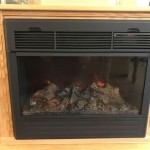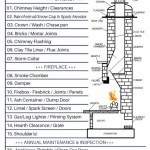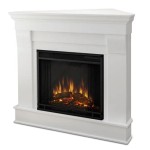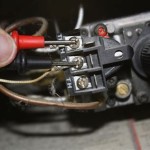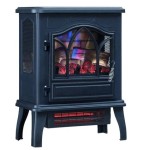Vintage Cast Iron Fireplace Wood Holders: An Antique Collector's Guide
Vintage cast iron fireplace wood holders represent more than mere functional objects; they are tangible links to bygone eras, embodying craftsmanship, artistry, and historical significance. These antique pieces, designed to elegantly store firewood near the hearth, have transcended their practical purpose to become coveted collectibles, adding character and charm to both traditional and modern homes. The allure of a vintage cast iron wood holder lies in its robust construction, intricate designs, and the unique patina acquired over decades of use and care. This article explores the defining characteristics, historical context, and value considerations for collectors interested in acquiring these timeless treasures.
Identifying Authentic Vintage Cast Iron Wood Holders
Distinguishing a genuine vintage cast iron wood holder from a reproduction requires a discerning eye and an understanding of the materials, manufacturing techniques, and stylistic trends prevalent during the periods when these pieces were originally produced. Several key indicators can help collectors authenticate these objects.
Firstly, the material itself provides an important clue. Authentic vintage wood holders are crafted from cast iron, a metal alloy known for its durability and heat resistance. Cast iron produced in the 19th and early 20th centuries often has a slightly rougher texture and may contain minor imperfections inherent in the casting process. Examine the surface closely for signs of wear and tear, such as subtle pitting, oxidation, or remnants of paint or enamel that have aged naturally over time. Modern reproductions often exhibit a smoother, more uniform surface finish, lacking the character associated with authentic antiques. Moreover, the weight of the piece is a reliable indicator; cast iron is a dense material, and vintage wood holders tend to be significantly heavier than their modern counterparts.
Secondly, the design and construction methods offer valuable insights into the age and authenticity of a wood holder. Early cast iron pieces were typically manufactured using sand casting, a process that involves pouring molten iron into a mold made of sand. This method often resulted in slight variations in the thickness of the metal and the presence of subtle mold lines or imperfections. Examine the wood holder for these telltale signs, paying particular attention to the underside and interior surfaces. Intricate details, such as floral motifs, geometric patterns, or figural representations, were often incorporated into the designs of vintage wood holders, reflecting the aesthetic preferences of the period. The level of detail and craftsmanship displayed in these designs can serve as a further indication of authenticity.
Finally, any markings or signatures present on the wood holder can provide crucial information about its manufacturer, origin, and age. Many vintage cast iron pieces bear the marks of the foundries that produced them, either in the form of raised lettering, stamped symbols, or incised designs. Researching these markings can help to identify the manufacturer and determine the approximate date of production. In some cases, the wood holder may also feature a patent number, which can be used to trace its history and verify its authenticity. Be wary of pieces that exhibit poorly executed or inconsistent markings, as these may be indicative of reproductions or altered items.
Exploring the Historical Context and Design Evolution
The history of cast iron fireplace wood holders is intertwined with the evolution of heating technology and interior design trends. During the 19th and early 20th centuries, fireplaces served as the primary source of heat in most homes, making the efficient storage of firewood a necessity. Cast iron wood holders emerged as a practical and aesthetically pleasing solution, providing a convenient and attractive way to keep firewood readily accessible near the hearth.
Early examples of cast iron wood holders were often simple and functional in design, featuring basic geometric shapes and minimal ornamentation. As manufacturing techniques improved and consumer demand for decorative objects increased, wood holders became more elaborate and visually appealing. Foundries began to experiment with intricate castings, incorporating elements of Victorian, Art Nouveau, and Art Deco styles into their designs. Floral motifs, scrolling patterns, and figural representations became increasingly popular, reflecting the prevailing aesthetic tastes of the time. The use of paint and enamel further enhanced the appearance of these pieces, adding color and visual interest to the hearth.
Different regions and manufacturers often developed their own distinct styles of cast iron wood holders, reflecting local traditions and design influences. For example, wood holders produced in the United States during the late 19th century often featured patriotic symbols, such as eagles, flags, or stars, reflecting the country's growing sense of national identity. In Europe, wood holders might incorporate elements of classical architecture or mythology, reflecting the region's rich cultural heritage. Studying the historical context and design evolution of cast iron wood holders can provide valuable insights into the social, economic, and artistic trends that shaped their creation.
Evaluating the Value and Condition of Antique Wood Holders
Determining the value of a vintage cast iron fireplace wood holder requires a careful assessment of several factors, including its rarity, condition, provenance, and aesthetic appeal. Rare or unusual designs, particularly those produced by well-known manufacturers or featuring unique artistic details, tend to command higher prices among collectors. The condition of the wood holder is also a critical consideration, as pieces in excellent original condition are generally more desirable than those that have been heavily damaged or restored.
The rarity of a specific wood holder design often stems from limited production runs, regional variations, or historical events that have contributed to its scarcity. Wood holders produced by smaller or lesser-known foundries may be more difficult to find than those manufactured by larger, more established companies. Pieces that feature unusual or unconventional designs, such as those incorporating figural representations or intricate geometric patterns, may also be considered rare. Collectors should research the history of the wood holder and its manufacturer to determine its relative scarcity and potential value.
The condition of the cast iron wood holder significantly influences its value. Pieces that retain their original paint or enamel finish and exhibit minimal signs of wear and tear are generally more desirable. However, some degree of wear is to be expected in antique items, and minor imperfections, such as small chips or scratches, may not significantly detract from the value of the piece. More serious damage, such as cracks, breaks, or extensive rust, can significantly diminish the value of the wood holder. Restoration can improve the appearance of a damaged wood holder, but it can also affect its authenticity and historical integrity. Collectors should carefully evaluate the condition of the wood holder and consider the impact of any restoration efforts on its value.
Provenance, or the history of ownership, can also play a role in determining the value of a vintage cast iron wood holder. If the wood holder can be traced back to a known historical figure or a significant event, its value may be enhanced. Documentation, such as receipts, photographs, or letters, can help to establish the provenance of the wood holder and increase its appeal to collectors. Finally, the aesthetic appeal of the wood holder is a subjective factor that can influence its value. Pieces that are visually striking, well-proportioned, and representative of a particular design style may be more desirable to collectors.

Antique Vintage Cast Iron Fireplace Basket Grate Coal Box Wood Log Holder Insert

Cast Iron Log Holder Gothic Antique Vintage Hammered Victorian Style Ornate Metal Fireplace Electric Heater

Antique Vintage Cast Iron Fireplace Grate Wood Rack Log Holder Removable

Cast Fireplace Log Holder Antique Vintage Victorian Style Ornate Iron Rare Unique Woman Leaf

Antique Cast Iron Fireplace Log Firewood Grate Holder Basket Ornate

Cast Fireplace Log Holder Antique Vintage Victorian Style Ornate Iron Rare Unique Woman Leaf

Vintage Cast Iron Horseshoe Andirons Western Fireplace Log Holder Home Decor Set Of 2 Height 19 Made In Japan

Pair Of Vintage Fireplace Andirons Brass Cast Iron Log Holder 17 25

Vintage Cast Iron Electric Log Holder For Chunk Glass Olde Good Things

Sold At Auction Antique Cast Iron Fireplace Log Holder
Related Posts


